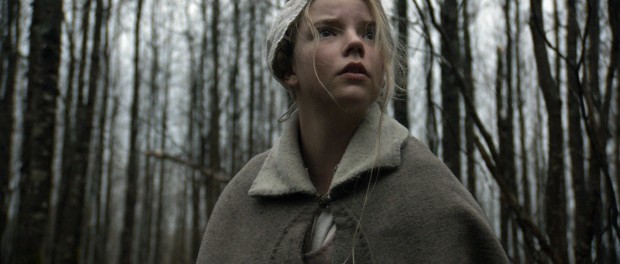The Witch: A Different Kind of Horror Movie
Horror films seem to have lost their mind recently, preferring to wade on the surface of our psyches rather than penetrate deeply. To find an intelligent scare, viewers are often tasked with wading through layers of overdone tropes and cliché mechanics before they land on a movie that gets it right. How refreshing it is then to see The Witch succeed this winter as a horror film with a head on its shoulders.
The movie stars Anya Taylor-Joy as teen girl Thomasin, Ralph Ineson and Kate Dickie as her parents William and Katherine, and Harvey Scrimshaw, Ellie Grainger, and Lucas Dawson as her siblings Caleb, Mercy, and Jonas. Just as the family begins settling a plot of forest land in 1600’s New England, the youngest child, baby Samuel, disappears. Soon after, they all start to have very strange, supernatural experiences that will leave them irrevocably changed.
So, how has The Witch set itself apart? Put together through the collaborative efforts of A24 Films and DirecTV, this indie-produced picture is one that chooses to look closely at the connections which bind us to our family members, our religion, and the fabric of reality itself. There are no “monsters” to chase or kill; instead, we see individuals torn apart by the crippling effects of isolation, paranoia, and the very ideologies that were designed to contain these fears.

The Witch
The eldest daughter Thomasin is the focal point of the family anxieties. The patriarchal seventeenth century setting is perfect for an inclusion of certain “feminist” messages, particularly discussions which explore the interconnected subjugation of women and nature. When Thomasin is accused of being a witch, and the root cause of all recent evils, she becomes a far larger and more empowered force. Thomasin and her mother, Katherine, have an especially tumultuous relationship that reaches an unfortunate end towards the film’s climax.
Religion is prominent in The Witch, but the theme isn’t given the overt scary-movie treatment. The entire film has an overtone of religious fanaticism due to the characters’ actions, and then there’s the family’s pet goat, Black Phillip, who turns out to be anything but a four-legged friend. Puberty, and its depiction in religious texts, is another theme that is carried out via Thomasin and her brother Caleb. The latter questions his father about all manner of things, his faith included, and struggles to come to terms with the world as it truly is as opposed to the sheltered world that he knows. But by painting the film in an eerie, atmospheric light, the director is able to avoid any heavy-handed references that might hold it back from finding deeper meanings. There are no cheap tricks or overuse of gore in The Witch, just a well-crafted, genuinely scary story that will stay fresh in viewers’ minds long after the credits roll.

The Witch
The Witch works because it provides sustained tension and provokes its audience to think. These are all things that many contemporary horror films don’t get right, but The Witch is a good example of arthouse horror at its best. This, combined with its gorgeous and compelling cinematography, make The Witch a must-see for scary movie fans and anyone who simply appreciates a thoughtfully-made film.
The Witch is now playing in theatres.






